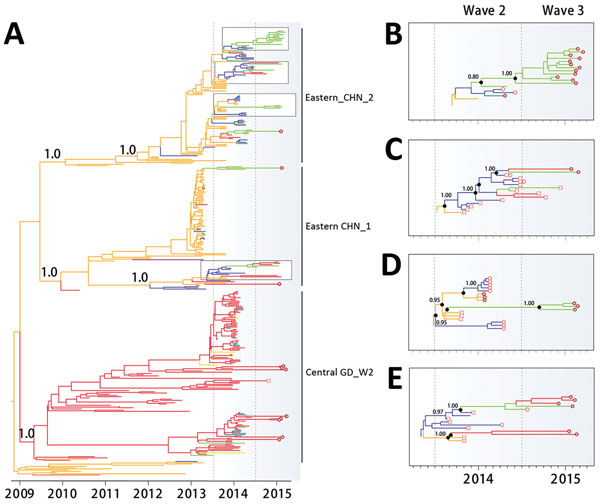Volume 22, Number 12—December 2016
Research
Effect of Live Poultry Market Interventions on Influenza A(H7N9) Virus, Guangdong, China
Figure 4

Figure 4. Genotypic analysis of influenza A(H7N9) viruses. Proposed genotypes are shown for 68 fully sequenced A(H7N9) viruses isolated from humans in central Guangdong during 2013–2015. Each square represents a gene sequence, and its color indicates the most probable clade to which that sequence belongs, as inferred from the phylogenies in Figures 2 and 3 and online Technical Appendix Figure, panels B–F (http://wwwnc.cdc.gov/EID/article/22/12/16-0450-Techapp1.pdf).
1These authors contributed equally to this article.
Page created: November 17, 2016
Page updated: November 17, 2016
Page reviewed: November 17, 2016
The conclusions, findings, and opinions expressed by authors contributing to this journal do not necessarily reflect the official position of the U.S. Department of Health and Human Services, the Public Health Service, the Centers for Disease Control and Prevention, or the authors' affiliated institutions. Use of trade names is for identification only and does not imply endorsement by any of the groups named above.